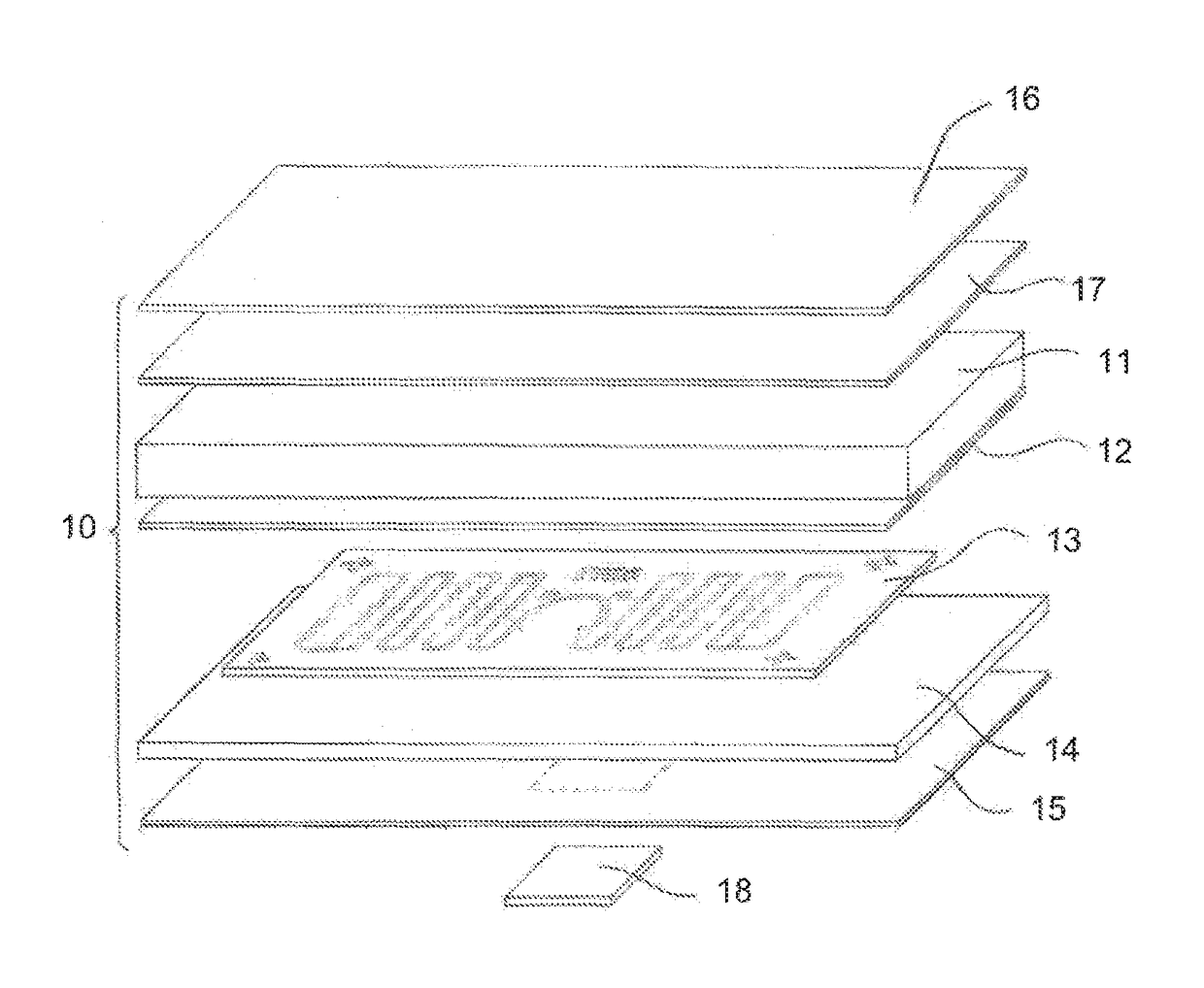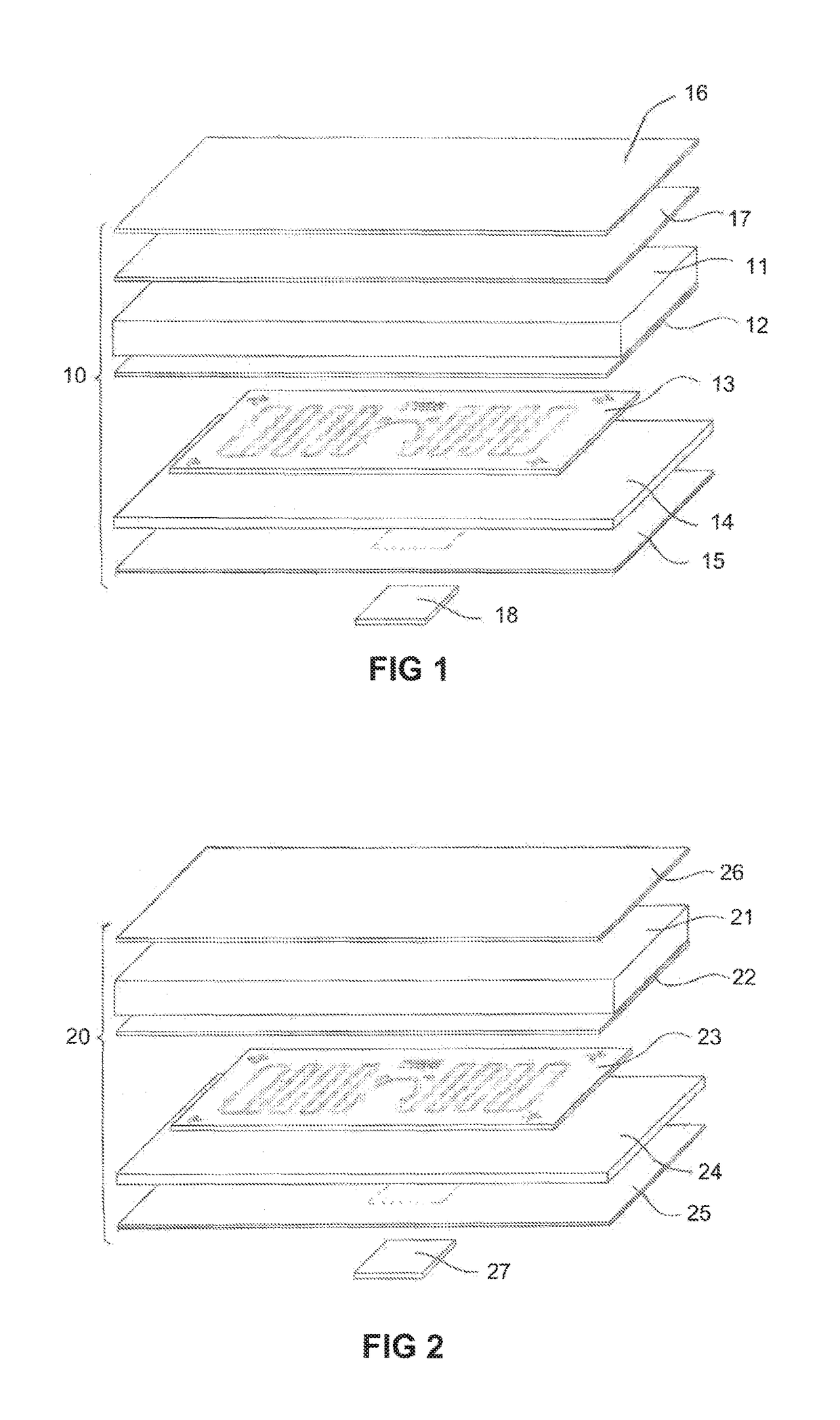RFID tag assemblies and process
a technology of rfid tags and assemblies, applied in the field of rfid tag assemblies and process, can solve the problems of cumbersome and inflexible solutions, and achieve the effect of reducing wear and tear of linen or the like and avoiding the association of relatively sharp edges
- Summary
- Abstract
- Description
- Claims
- Application Information
AI Technical Summary
Benefits of technology
Problems solved by technology
Method used
Image
Examples
Embodiment Construction
[0030]A tag assembly method is described below with reference to FIG. 1. FIG. 1 shows a thermo patch assembly 10 comprising at least the following layers:[0031]1. a top woven polymeric sheet or synthetic layer 11;[0032]2. an adhesive layer 12 for a secondary antenna layer;[0033]3. a secondary antenna layer 13;[0034]4. a heat activated adhesive layer 14; and[0035]5. a relatively thin pressure sensitive adhesive (PSA) layer 15.
[0036]Top woven polymeric sheet or synthetic layer 11 may include a PI, PEN or PET substrate that is relatively resistant to high temperatures including temperatures that may be at least 200° C. or more. In one form the top layer 11 may include a PI layer that is 30 μm to 100 μm in thickness. Secondary antenna layer 13 may be provided on a woven (textile or fabric) or plastics (PEN) substrate. Secondary antenna layer 13 may include a 17 μm-35 μm thick etched copper layer to provide the radiating loop of the secondary antenna.
[0037]An optional over-layer 16 such ...
PUM
| Property | Measurement | Unit |
|---|---|---|
| temperatures | aaaaa | aaaaa |
| thickness | aaaaa | aaaaa |
| thick | aaaaa | aaaaa |
Abstract
Description
Claims
Application Information
 Login to View More
Login to View More - R&D
- Intellectual Property
- Life Sciences
- Materials
- Tech Scout
- Unparalleled Data Quality
- Higher Quality Content
- 60% Fewer Hallucinations
Browse by: Latest US Patents, China's latest patents, Technical Efficacy Thesaurus, Application Domain, Technology Topic, Popular Technical Reports.
© 2025 PatSnap. All rights reserved.Legal|Privacy policy|Modern Slavery Act Transparency Statement|Sitemap|About US| Contact US: help@patsnap.com



